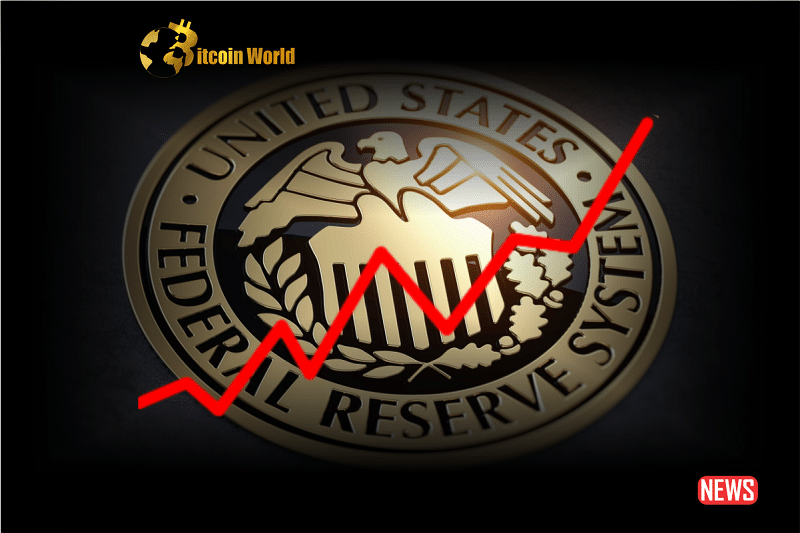Did you feel a shift in the economic winds last Friday? All eyes were on Federal Reserve Chairman Jerome Powell as he addressed the Jackson Hole Symposium, and his message was clear: the fight against inflation isn’t over yet. Despite some whispers suggesting otherwise, Powell firmly reiterated the Fed’s unwavering commitment to bringing inflation down to its 2% target. But what does this mean for your investments and the overall economy?
Is 2% Still the Magic Number for Inflation?
Powell left no room for doubt, stating emphatically, “Two percent is and will remain our inflation target.” This firm stance comes even as some prominent voices, like economist Paul Krugman, suggest a more flexible 3% target might be more appropriate in the current economic climate. Krugman argued in a recent New York Times op-ed that sticking rigidly to 2% could hinder economic growth unnecessarily. It’s a debate with significant implications, and Powell’s speech has reignited it.
Brace for Below-Trend Growth?
The path to that 2% target, according to Powell, might not be a smooth one. He cautioned that achieving this goal could require a “period of below-trend economic growth.” Essentially, the Fed is prepared to see the economy slow down to tame inflation. This is a delicate balancing act, and the markets are keenly observing every move.
How Did the Markets React to Powell’s Words?
Powell’s speech had a tangible impact, and the numbers tell the story:
- Increased Rate Hike Probability: The CME FedWatch tool showed a significant jump – a 19% increase – in the probability of a rate hike at the upcoming September meeting.
- Higher Chance of Another Hike This Year: The likelihood of yet another rate increase before the end of 2023 climbed to 52.1%, reaching a two-month high. This indicates growing investor anticipation of further tightening.
- Rate Cut Expectations Pushed Back: Those hoping for a quick return to lower interest rates might need to wait longer. Market expectations for the first rate reduction have now shifted to June 2024.
What Does This Mean for You?
The Fed’s actions have ripple effects throughout the economy. Here’s a breakdown of potential implications:
- For Borrowers: Expect borrowing costs for things like mortgages, car loans, and credit cards to remain elevated or potentially increase further.
- For Savers: Higher interest rates can mean better returns on savings accounts and certain fixed-income investments.
- For Investors: The path forward becomes more uncertain. While rate hikes aim to curb inflation, they can also dampen economic growth, potentially impacting corporate earnings and stock valuations. The delay in expected rate cuts might also influence investment strategies in assets like crypto and equities.
Navigating the Uncertainty: Key Takeaways
The current economic landscape is complex, and the Fed faces a challenging task. Here are some key points to consider:
- Inflation Remains the Priority: Powell’s message underscores the Fed’s unwavering focus on bringing inflation down to 2%.
- Economic Slowdown Possible: Be prepared for the possibility of slower economic growth as a consequence of the Fed’s actions.
- Market Volatility Likely: Expect continued fluctuations in the financial markets as investors react to economic data and Fed pronouncements.
- Stay Informed: Keep a close eye on economic indicators and Fed communications to understand the evolving situation.
Looking Ahead: What to Watch For?
The coming months will be crucial in determining the Fed’s next moves. Market participants will be closely scrutinizing:
- Inflation Data: Key inflation reports will heavily influence the Fed’s decision-making process.
- Employment Figures: A strong labor market could give the Fed more leeway to continue raising rates.
- Economic Growth Indicators: Signs of a significant economic slowdown could prompt a reassessment of the Fed’s strategy.
In Conclusion: A Delicate Balancing Act
Jerome Powell’s address at Jackson Hole has set the stage for continued vigilance in the fight against inflation. The Federal Reserve is signaling its readiness to endure a period of slower growth to achieve its 2% target. While this commitment provides clarity on the Fed’s intentions, it also introduces uncertainty and potential challenges for the economy and financial markets. As the global economy navigates this post-pandemic recovery, all eyes will remain on the Fed and the incoming economic data that will shape its future course of action. The balancing act between taming inflation and fostering sustainable growth continues, and the stakes are high.
Disclaimer: The information provided is not trading advice, Bitcoinworld.co.in holds no liability for any investments made based on the information provided on this page. We strongly recommend independent research and/or consultation with a qualified professional before making any investment decisions.


